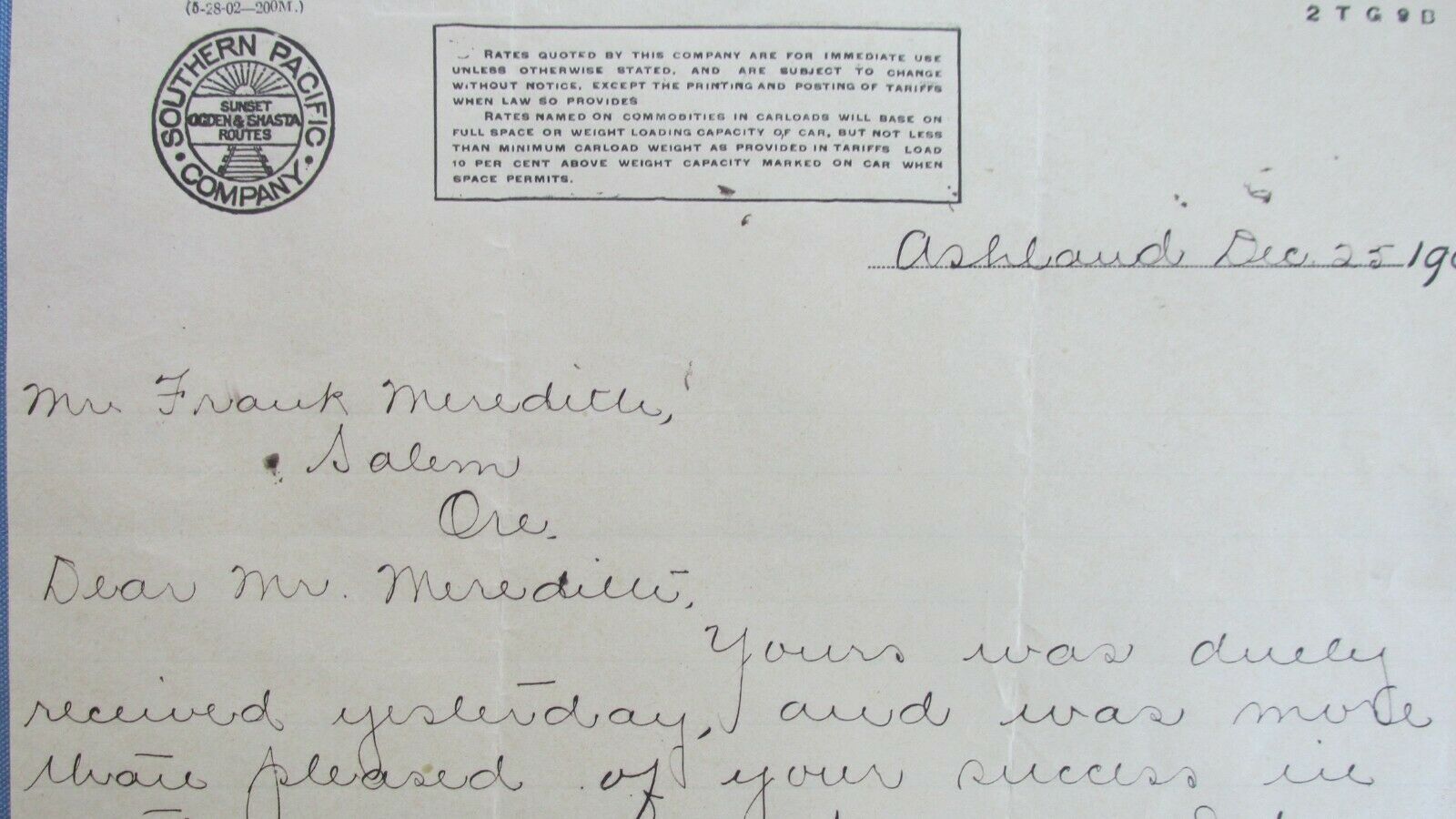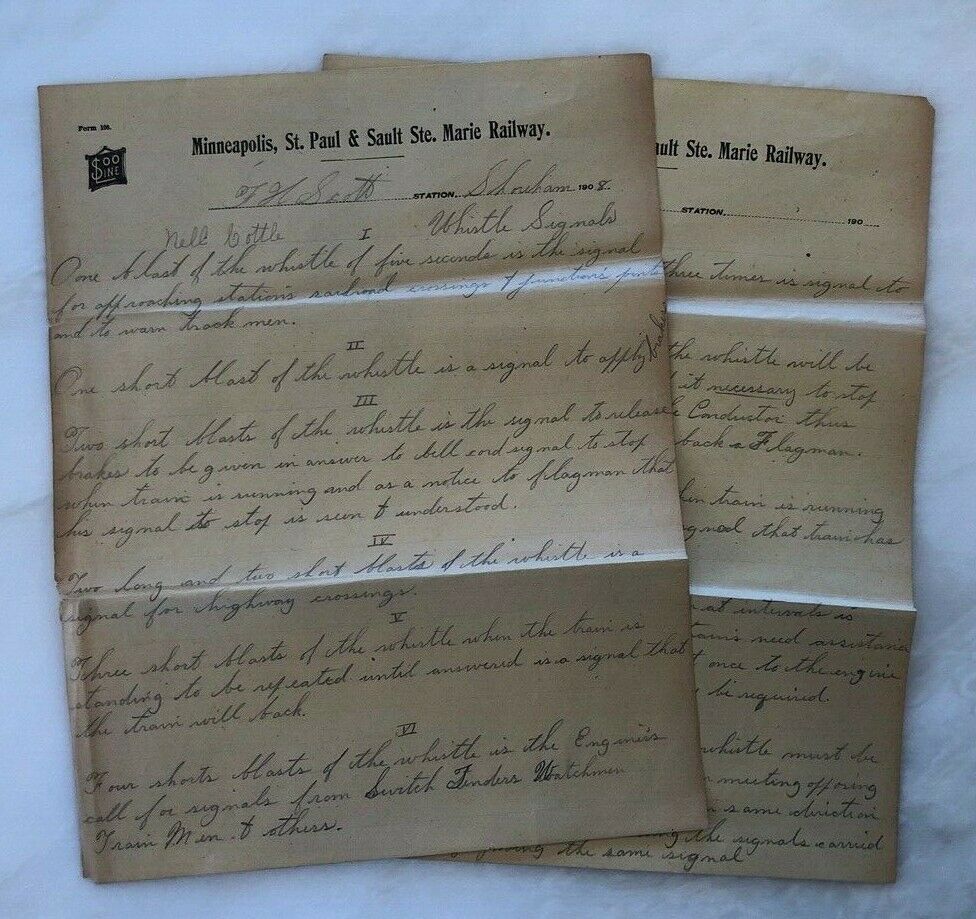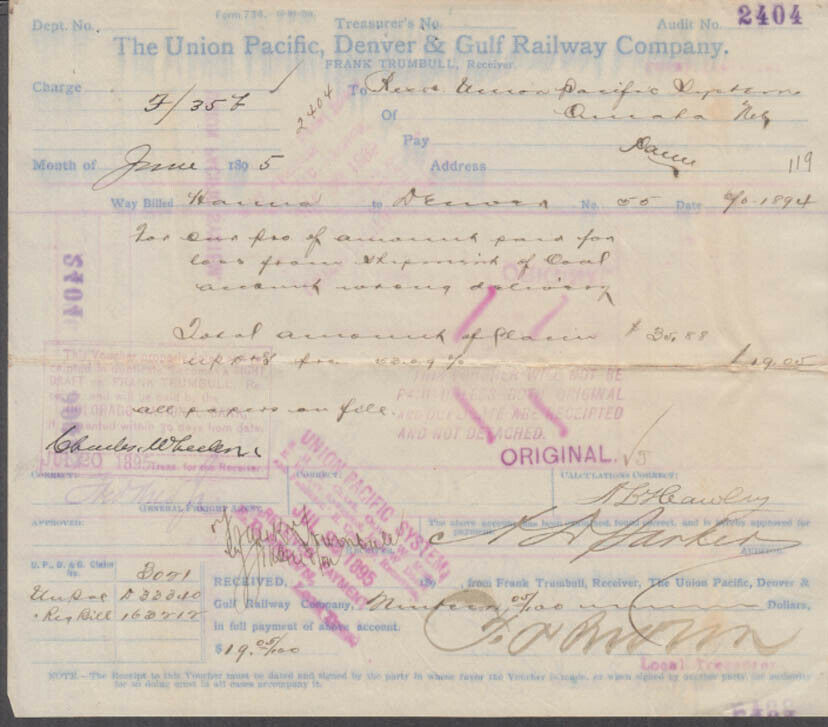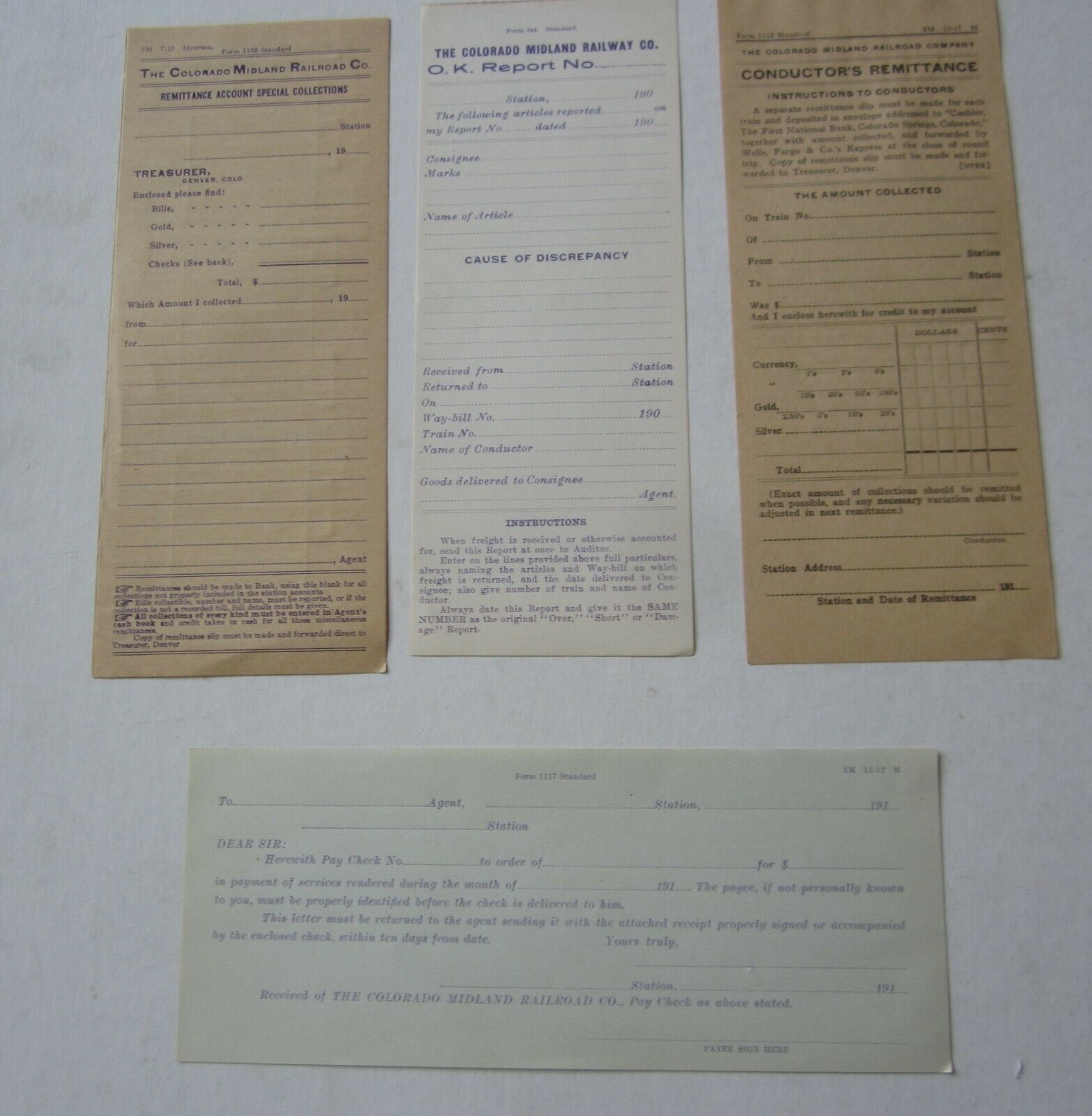-40%
BROOKLYN BRIDGE ROEBLING ENGINEER PRESIDENT IRON RAILROAD DOCUMENT SIGNED CHECK!
$ 4.21
- Description
- Size Guide
Description
JOHN DUTTON STEELE(1810 – 1886)
AMERICAN ENGINEER WHO WAS A MEMBER OF THE COMMISSION THAT APPROVED JOHN ROEBLING’S PLANS TO BUILD THE BROOKLYN BRIDGE,
PRESIDENT OF THE “
STERLING IRON AND RAILWAY COMPANY
” 1868-1871,
FOUNDER and PRESIDENT OF J. D. STEELE and SONS MANUFACTURING CO. FOUNDRY and MACHINE WORKS
CHIEF ENGINEER CONSTRUCTING THE NESQUEHONING VALLEY RAILROAD and
TUNNEL IN CARBON COUNTY, PA.,
1870s
&
PIONEER RAILROAD BRIDGE ENGINEER!
<
<>
>
HERE’S A PAIR OF DOCUMENTS SIGNED BY STEELE AS PRESIDENT OF THE STERLING IRON and RAILWAY CO. – TWO (2) CHECKS PAYING J. W. BEARDSLEY & SONS. THE DOCUMENT IS ALSO SIGNED BY A. W. HUMPHREYS, SECRETARY and TREASURER OF THE RAILWAY CO.
THE CHECKS BEAR AN INTERNAL REVENUE STAMP IMPRINT (SCOTT No. RN-H3) & ARE DATED AT NEW YORK IN
1868.
THE DOCUMENTS MEASURE 8½” x 3¼”and ARE IN VERY FINE CONDITION.
A RARE ADDITION TO YOUR AMERICAN INDUSTRIAL ENGINEERS and NY RAILROAD/BROOKLYN BRIDGE HISTORICAL AUTOGRAPH, MANUSCRIPT & EPHEMERA COLLECTION!
<<>>
BIOGRAPHY OF J. DUTTON STEELE
J. DUTTON STEELE is the eldest son of John D. Steele, of Chester County, Pa., who migrated with his family from England in 1795, and first settled in Whitemarsh township, Montgomery County, where he resided for seven years, after which he married Ann, daughter of Hugh Exton, of Hunterdon County, New Jersey, and purchased a tract of land in central Chester County, upon which he resided during the remainder of his life.
There J. Dutton Steele was born in Chester County, NY on March 18, 1810, and at the age of eighteen, after being educated in the mathematical schools of Chester Co., he joined a corps of engineers engaged in the surveys for the internal improvements of Pennsylvania, and continued in the service of the State for two years.
In 1830 he entered the service of the Baltimore and Ohio Railroad Company, the construction of which work was at that time being commenced, and continued in that service for ten years having been connected chiefly with the construction department until their rails had reached Harper's Ferry, and had been extended to Baltimore, Md., and during in interval in that service he located the road between Troy and Ballston Spring in the State of New York. His last appointment with the Baltimore and Ohio Company was in connection with the location and construction of the Western Division of the road, extending, from Cumberland, Md., to the Ohio River.
In 1837 he was married to Elizabeth, daughter of Judge Thomas Capner, of Hunterdon County, N.J., and settled in Wheeling, Va., from which point he conducted all extensive system of surveys necessary for the location of the work in charge. The great financial break-down of that period, however, caused the railroad company to suspend the construction of their road west of Cumberland, and consequently his engagements with them terminated in 1840. He then purchased a farm near Downingtown, Pa., and followed the pursuits of agriculture for six years. . . .
In 1846 he made a survey of Pittsburgh and its environs for the purpose of indicating the practicable routes for entering that city with railway improvements, and entered the service of the Philadelphia and Reading Railroad Company on the 1st of January, 1847, in charge of the roadway department of that road, and continued in the service of that company, in the several capacities of chief assistant engineer, chief engineer and vice-president, until 1867, -- a period of nearly twenty years. . . .
He introduced into railway practice the ribbed stone arches for skew bridges, and availing himself of the experiments made by a commission appointed by the Queen of England in 1847 to investigate the "applicability of iron to railway structures," the report of which was published in 1849, he introduced wrought-iron girders for bridges of short spans, and was the first to use electricity as in auxiliary to rock-blasting to any considerable extent, with no light to guide him but some experiments which had been made in English stone quarries, and without the aid of which the tunnels on the Reading Railroad could not have been widened, in the brief space of four months allotted for the completion of the work, with safety to the passing trains.
In 1868 he was elected president of the Sterling Iron and Railway Company, and removed to Brooklyn, and assumed the duty of developing an extensive iron ore property in Orange County N. Y., in which position he continued for three years. During this period he made explorations for railroad extensions in the States of Michigan, Wisconsin and Minnesota; took all active part in organizing the American Society of Civil Engineers and contributed to their journal, and was appointed one of a commission of civil engineers to examine and approve the plans of John A. Roebling for the East River
[i.e., Brooklyn]
suspension bridge. . . .
In 1870 he returned to his residence in Pottstown, Pa., and was in charge of the construction of the Nesquehoning Valley Railroad and the Nesquehoning tunnel, in Carbon County, Pa., and in the latter work, availing himself of the experiments then in progress at the Hoosac tunnel, made use of compressed air as a motive-power for the rock-drills.
He was next appointed to select the location, amid several conflicting interests, for the extension of the Baltimore and Ohio Railroad from Central Ohio to Chicago, and after the necessary surveys, recommended the route upon which that road is now built, and was also engaged on the Wilmington and Northern and Berks County Railroads and other works of lesser importance.
He afterwards organized and established the J. D. Steele & Sons' Manufacturing Company at Pottstown, Pa., and thus ended an active but inconspicuous professional career.
Steele died on June 13, 1886 and is buried, with many other members of his family, in Edgewood Cemetery, Pottstown, PA.
Sources:
·
History of Montgomery County, Pennsylvania,
(1884)
·
The Unique Stories of those buried in Edgewood Cemetery, “The Mercury” Newspaper, Pottstown, Pa., Aug. 3, 2014
·
Find A Grave – Memorial ID:
111668593
<<>>
The Sterling Iron and Railway Co. (1864-1899)
The Sterling Iron and Railway Co. was formed in 1864 to assume control of the Sterling Iron estate. On April 1, 1864, through the intercession of David Crawford, Jr., the son-in-law of Peter Townsend III, all of the property of the Sterling Iron Works was sold to the recently-formed Sterling Iron and Railway Co. Peter Townsend III had a large interest in the company and he was joined by several prominent men including Thomas A. Scott, president of the Pennsylvania Railroad and assistant secretary of war during the Civil War, Jay Cooke, the financier, Joel Barlow Morehead, Samuel L.M. Barlow, and George C. Clark.
In November 1867 a separate company, the Sterling Mountain Railway Co., was formed to assume control of the railroad operations. As of November 30, 1867 its officers were J. Dutton Steele, president; David Crawford, Jr., O.D.F. Grant, Peter Townsend, J.B. Moorhead, W.G. Moorhead and Thomas A. Scott, board of directors. A.W. Humphreys was secretary and treasurer, and Thomas C. Steele, engineer and superintendent.
The Sterling Iron and Railway Co. operated the mines and furnaces of the Sterling tract until the 1920s but business had begun to falter by 1890 and in 1892 there was a reorganization of the company. Several changes regarding the controlling interests of the company occurred during this period. Macgrane Coxe was named president in 1892 and was soon followed by James D. Rowland of Philadelphia who was succeeded by Theodore Price in 1905. In 1911, H.A. Van Alstyne assumed control of the company and retained control until the company’s demise in the 1920s.
I am a proud member of the Universal Autograph Collectors Club (UACC), The Ephemera Society of America, the Manuscript Society and the American Political Items Collectors (APIC) (member name: John Lissandrello). I subscribe to each organizations' code of ethics and authenticity is guaranteed. ~Providing quality service and historical memorabilia online for over twenty years.~
WE ONLY SELL GENUINE ITEMS, i.e., NO REPRODUCTIONS, FAKES OR COPIES!












